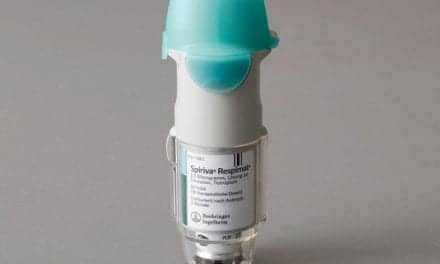Air travel over long distances has become commonplace for many individuals. The oxygen-dependent patient is no exception.

Flight Environment
The proportion of atmospheric oxygen inside a pressurized aircraft remains the same as that in ambient air at about 21%. With increasing altitude, oxygen pressure decreases. Cabin pressure in a jet airliner is generally maintained at approximately 445 mm Hg above the outside barometric pressure; hence, cabin pressure is generally 567 to 692 mm Hg, similar to the pressure at altitudes of approximately 914 m to 2.4 km.1 The US Federal Aviation Administration requires aircraft to maintain a 2.4-km cabin altitude at the highest operating altitude.2 Regulations for actual flight operations, however, are more complicated and flexible, allowing for temporarily higher flight and cabin altitudes during turbulence or adverse weather. Cabin altitudes greater than 3 km are effectively prohibited, since all crew members and passengers would then be required to use supplemental oxygen.3 The average cabin temperature is 20 to 22.2°C, and the relative humidity is 10% to 12%. The air in the cabin is completely exchanged every 3 minutes.4
Altitude Hypoxia
In high-flying commercial aircraft, environmental changes are offset, to some extent, by compressors that draw in external air and deliver it to the cabin. The outflow of cabin air is regulated so that an appropriate pressure differential is maintained between the cabin and the outside. Each type of aircraft is designed to fly at a different maximum altitude and has a different cabin-pressurization capability. Healthy passengers usually have little difficulty in tolerating moderate changes in altitude. Hypoxia and concomitant hypoxemia associated with ascent initiate a variety of reflex responses designed to reduce the pressure gradient between the oxygen in the atmosphere and that in body tissues.4
A reduction of PO2 to less than 60 mm Hg generally stimulates peripheral chemoreceptors (carotid bodies), which then induce hyperventilation. The threshold and magnitude of hyperventilation vary from person to person, and the resulting respiratory alkalosis may attenuate hypoxemia. Hyperventilation is the most important reflex response to hypoxemia, and it maximizes PaO2 and alveolar PO2, assuming that oxygen consumption is stable. Minute ventilation increases, primarily as a result of increased tidal volume (rather than tachypnea).3,4
The effect of altitude changes in patients with chronic obstructive pulmonary disease (COPD) depends on the final altitude reached, which determines the maximum available oxygen pressure. It also depends on the rate of ascent and the duration of the flight at the final altitude. Patients with severe COPD may be unable to adapt to altitude stress. Despite marked hypoxemia, their ability to hyperventilate may be mechanically impaired or limited by a diminished hypoxic ventilatory drive. Preexisting hypoxemia may be worsened by anemia, carboxyhemoglobinemia, sleep, exercise, and the ingestion of alcohol. Concomitant cardiac dysfunction and pulmonary hypertension may prevent any increase in cardiac output necessary for adequate systemic oxygen transport during such stress.
Another effect of prolonged air travel is immobilization, which increases the risk of developing pulmonary thromboembolic disease. Patients with COPD are already at increased risk for deep vein thrombosis and should be warned about prolonged immobilization when traveling.
Preflight Evaluation
When examining a patient with COPD to determine whether he or she can travel safely by air, it is important to assess how changes in atmospheric pressure are likely to affect the patient. Other factors to consider include how the patient will cope with the noise, turbulence, limited space, fatigue, and psychological stress associated with air travel. The examination should begin with a thorough review of the patient’s medical history and current treatment regimen. A thorough physical examination should be performed. Electrocardiography and hematological studies may help detect any clinical contraindications to air travel (Table 1). Chest radiographs may be helpful if there is a suspicion of pneumonia, pulmonary edema, or pneumothorax.
Relative contraindications to air travel include a vital capacity or diffusing capacity of less than 50% of the predicted value, a maximum voluntary ventilation of less than 40 L/min, respiratory acidosis, and a PaO2 of less than 50 mm Hg.5 These values, however, may be misleading, since they relate to the patient’s ground environment and do not take into account the use of supplemental oxygen aloft. Measuring the PaO2 as close to the time of flight as possible is an excellent way to predict what the PaO2 will be at altitudes of up to 8,000 feet in normocapnic COPD patients.4
In-Flight Oxygen
The most effective treatment of significant altitude hypoxemia is supplemental oxygen. (See sidebar below on standard airline policies.) The goal of oxygen therapy at altitude is to maintain adequate tissue oxygenation and prevent hypoxemic complications. Although no specific criteria exist for recommending supplemental oxygen during flight, some experts recommend prescribing supplemental oxygen for COPD patients whose PaO2 values might fall below 50 mm Hg at any altitude.
With the proper preparation, supplemental oxygen may be used safely in flight. Patients requiring supplemental oxygen or other medical devices during flight should communicate with their physicians, oxygen vendors, travel agencies, airlines, and trip companions. Airlines require notification at least 2 to 14 days prior to flight departure, depending on whether the trip involves domestic or international travel. Domestic carriers usually charge a fee per flight segment for supplemental oxygen and usually have only a limited selection of flow rates (2, 4, and 8 L/min). They typically do not allow patients to use their own oxygen delivery equipment, nor do they arrange for oxygen at stopovers. Therefore, precise oxygen arrangements should be made at each stopover for patients who are dependent on supplemental oxygen 24 hours a day. Some commuter airlines do not allow any supplemental oxygen.
Most airlines permit portable mechanical ventilators onboard as long as they fit beneath the seat and have a backup battery that is either a dry-cell or a gel-cell type. It will be necessary for the patient or the companion to carry all medications and delivery devices (including spacers, portable nebulizers, and suction equipment) onto the plane. Battery-powered equipment is preferred because some nebulizers and suction equipment may interfere with the aircraft’s navigational systems and may not be allowed on board.6
Spare parts (nuts, bolts, scissors, tape, and nasal cannulae), as well as a voltage converter, may be useful. Arrangements to have seats near the restroom (and time to empty the patient’s bladder before boarding) may be helpful in decreasing the amount of walking required during the flight. It is prudent to obtain the names of physicians at each destination and to carry a description of medical facilities available at each airport.
A list of practical tips for the COPD patient who is planning to travel by air is presented in Table 2 (page 26). Successful air travel for the oxygen-dependent patient is possible, but it requires advance preparation that involves communication with physicians, airlines, and vendors of oxygen and equipment.
Conclusion
Perhaps the most important thing that the patient with respiratory disease who is contemplating air travel can do is discuss travel plans with his or her physician before the flight. The physician can tell the patient whether air travel is a good idea, and can discuss any special needs. With careful preparation, a sufficient oxygen supply, and a medical escort, almost any patient with respiratory disease can travel by air to virtually any destination.
|
||
| Airline Policies Most airlines have specific policies regarding the use of in-flight oxygen. A typical airline policy statement is: “Passenger needs therapeutic oxygen provided inflight. A 48-hour notice is required, and a special assistance coordinator will confirm the availability of this request. A $100 fee is required per flight segment.”8 |
John D. Zoidis, MD, is a contributing writer for RT.
References
1. AMA Commission on Emergency Medical Service. Medical aspects of transportation aboard commercial aircraft. JAMA. 1982;247:1007-1011.
2. 24 CFR §25.841.
3. Gong H Jr. Air travel and oxygen therapy in cardiopulmonary patients. Chest. 1992;101:1104-1113.
4. Gong H Jr. Should your patient be allowed to fly? Advising COPD patients about commercial air travel. J Respir Dis. 1984;5:28-39.
5. Mortazavi A, Eisenberg MJ, Langleben D, Ernst P, Schiff RL. Altitude-related hypoxia: risk assessment and management for passengers on commercial aircraft. Aviat Space Environ Med. 2003;74:922-927.
6. Krieger BP. Travel for the technology-dependent patient with lung disease. Clinics in Pulmonary Medicine. 1995;2:1-9.
7. Stoller JK. Travel for the technology-dependent individual. Respir Care. 1994;39:347-362.
8. American AIrlines. Planing ahead. Available at: http://aa.com/content/travel Information/travelHelp/planningAhead.jhtml. Accessed June 28, 2004.









